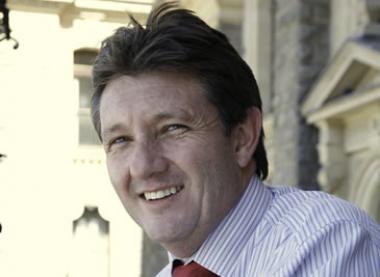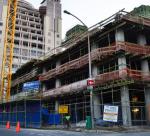Greening Cape Town CBD pays dividends for business and tenants
 Rob Kane: Chairperson of The Central City Improvement District (CCID).
Rob Kane: Chairperson of The Central City Improvement District (CCID).
The greening of 14 Loop Street, a recently refurbished 1904 building in Cape Town’s CBD is paying both commercial and environmental dividends for the owners, the tenants and the city.
Rob Kane, Chairperson of The Central City Improvement District (CCID), says that world class working cities will need to be green cities.
“Sustainability is no longer a nice to have; it’s an imperative in order to keep the heart of the central city beating as a commercial, residential and retail hub. As with other successful global CBDs, the importance we place on making this a green city is fundamental for our plans to retain and attract business. 14 Loop Street, which is owned by Vunani Property Investment Fund Limited, is a great example of how this can be done.”
During the renovation of the “1904” building two years ago, Vunani adopted a range of relatively simple changes, which have reduced the water consumption to a sixteenth and the power consumption to less than a third, in comparison to the rest of the buildings in its property portfolio.
The greening changes have also been beneficial to the tenants’ pockets. “The renovations have translated to saving the tenants R10 – R15/m2, a 10 - 15% saving on a rental of R100/m2. Bearing in mind how sensitive tenants are to their accommodation costs, this is a material saving”, says Kane
The internal design of the building is focused on energy efficiency. The installation of ducted VRV air conditioning is more expensive than the used console units. However, it saves 30% more power than a console and therefore a better option in the long run. Furthermore, the VRV system is emission friendly. Another advantage of the open plan format was a saving on building costs and material usage.
The water savings were driven by the installation of waterless urinals and dual flush toilets. Rain water is collected on the roof, stored, and is used as grey water.

“Where possible, Vunani used reconstituted materials and renewable resources, such as bamboo and recyclable materials, such as aluminium, which reduced the environmental impact of the renovation. We retained existing fittings where possible, which reduced costs”, added Kane.
He says both Eskom and the Department of Environmental Affairs have been impressed by the building’s energy efficiency statistics.
“Eskom is very excited about the energy efficiency statistics from the project and would like to take the learnings from it further”, says Lodine Redelinghuys, Sales & Marketing Manager, Eskom.
Dr Guy Preston, Deputy Director-General: Environmental Programmes at the Department of Environmental Affairs, “We would like to challenge other buildings in the Cape Town CBD to implement a combination of efficiencies of equipment and a change in behaviour to reduce their carbon footprint.”
Kane says, “The CBD is ‘open for business’, we will create a sustainable and attractive work environment for employees and tenants in Cape Town’s city centre”.

















